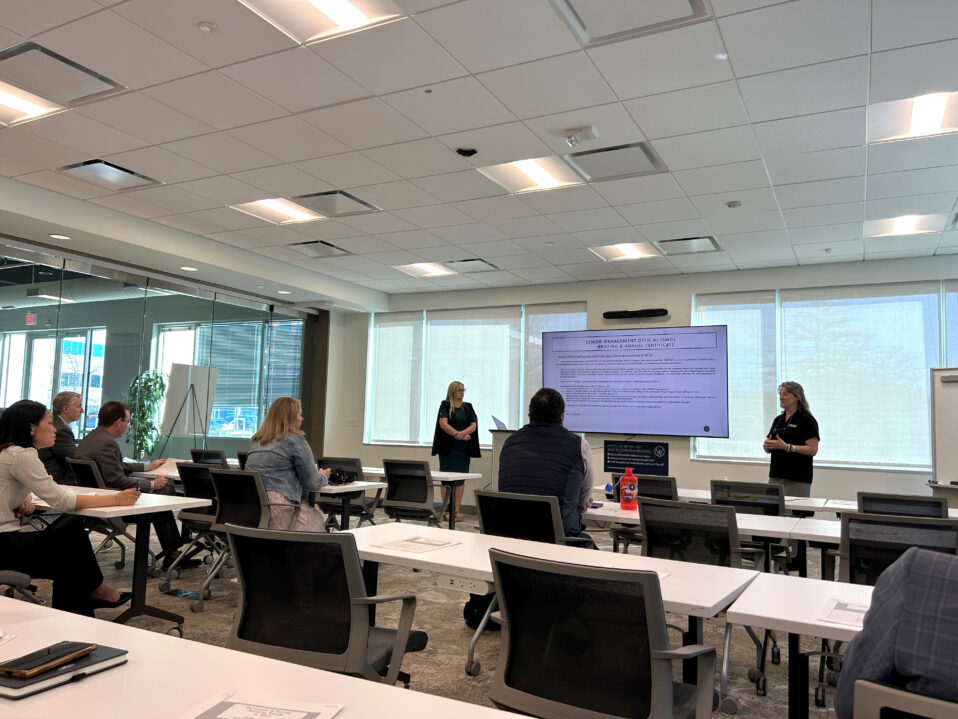The elevation of U.S. Cyber Command to the status of an independent Unified Combatant Command made history this spring. The elevation which was only the 10th in U.S. history, recognized cyber space as a war-fighting domain and provided Cyber Command with a seat at the Joint Chiefs of Staff table.
The change has profound ramifications for both the nation and Fort Meade, where U.S. Cyber Command is headquartered.
The elevation recognizes the critical importance of cyber space as a warfighting domain and provides the capabilities and the authorities to enable this “enhanced mission” within the Department of Defense, said Will Metts, FMA Executive Board Member, Northrop Grumman Director and former Director for Intelligence of U.S. Cyber Command.
That elevation also delivers “a number of unique benefits to the garrison and the State of Maryland,” Metts said.
Col. Erich Spragg – Fort Meade Garrison Commander and a 23-year military intelligence officer – expects at least 3,000 additional personnel to be assigned to Cyber-related agencies on post by 2024.
“The Fort Meade Region has become the center of DoD’s cyber mission – its policies, tactics and strategies for defense and combat in cyber space,” said Tim O’Ferrall, General Manager of the Fort Meade Alliance. “Because that activity is happening here, most people who want to participate in that strategy and understand the direction of DoD cyber defense and offense, will want to be in proximity to Fort Meade.”
Cyber Command’s enhanced mission and new budget will create additional contracting opportunities.
“In the fiscal 2016 defense authorization bill, Congress gave U.S. Cyber Command limited acquisition authority capped at $75 million sunsetting in 2021” and U.S. Cyber Command has asked for $250 million through 2025, said Doreen Harwood, FMA President and Senior Vice President at Leidos. Those funds are in addition to the contracting budgets of the National Security Agency and the Cyber Service Commands within each branch of the military.
“Cyber Command is a brand new mission with their own resources and the authority to award their own contracts,” Harwood said. “It means that local industry can employ more people as well as expand internship programs, taking advantage of the skills of talented students coming out of Maryland’s higher education system. It means that all boats rise.”
Contractors to Cyber Command likely will also need to adjust to a different work pace.
“The traditional acquisition process tends to take several years from concept to request for proposal to deliver the actual capability,” Metts said. “But if you look at the diversity of mission and the speed of threat changes that are occurring in cyber space, any private industry entity that is planning to be relevant to the mission enhancement of U.S. Cyber Command will need to be able to deliver rapidly.”
Metts points to the example of DreamPort – a state-of-the-art facility created by Cyber Command and the Maryland Innovation and Security Institute. The collaborative environment enables government, industry and academia to develop technologies that support Cyber Command’s mission. Congress and the Department of Defense have also established rapid acquisition processes “to acquire mission enhancement capabilities, specifically for proof of concept, in a much more agile manner than the traditional acquisition process,” Metts said.
That environment could spark business growth in the region, said Julie Mussog, FMA Executive Board Member and President and CEO of Anne Arundel Economic Development Corporation.
“I anticipate we will have some additional companies relocate here or expand their presence here,” Mussog said. “I also anticipate we will have some startup businesses from some local people who may be current NSA employees but see opportunities to start their own companies.”
To serve that growth, the region will need to expand its efforts to develop skilled cyber workers, Harwood said.
“You need to have smart people with an understanding of programming languages and operating systems, but they don’t all necessarily need four-year degrees or clearances,” she said.
Workforce development initiatives that help individuals acquire the needed skills, she added, would help the region satisfy existing and increasing talent needs. FMA’s Education Committee is working proactively with local high schools, two-year and four-year colleges, and universities to fully leverage those initiatives to prepare students for these exciting opportunities.
“Fort Meade has four Anne Arundel County elementary schools, a middle school and a high school on the installation,” said Col. Spragg. “We are working closely with all of the schools, including community colleges and universities, to ensure students are armed with the skills they need for the highly technical work we do here.”



